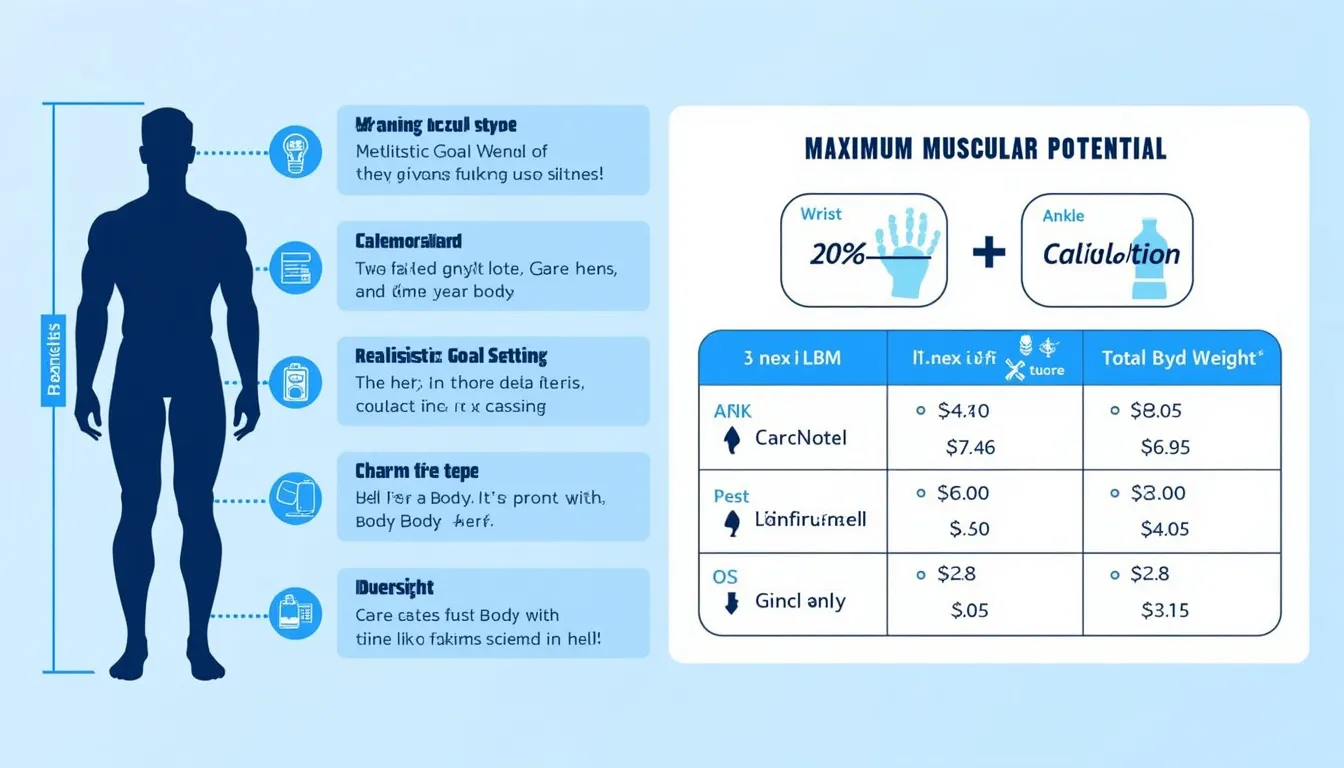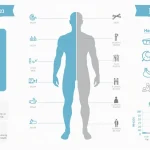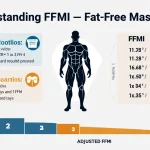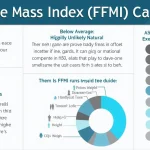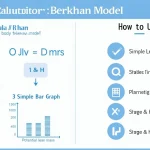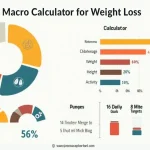Maximum Muscular Potential Calculator
Is this tool helpful?
How to Use the Maximum Muscular Potential Calculator Effectively
This calculator helps you estimate your maximum muscular potential based on your unique body measurements and target body fat. To get accurate and meaningful results, follow these simple steps:
- Enter your height in centimeters (cm). For example, try 172 cm or 185 cm as sample inputs.
- Measure and input your wrist circumference in centimeters (cm). Measure just below the hand at the styloid process. Sample inputs: 16.5 cm or 19 cm.
- Measure your ankle circumference at the smallest point in centimeters (cm). Sample measurements could be 20.5 cm or 24 cm.
- Enter your target body fat percentage (%). This is the level of leanness you aim to achieve, such as 10% or 15%.
- Click the Calculate button to view your results, including your maximum potential body weight, fat-free mass, and muscular measurements for various body parts.
By consistently inputting accurate measurements and your realistic target body fat, you can use this tool to set achievable fitness goals and tailor your training for maximum effectiveness.
What Is the Maximum Muscular Potential Calculator?
The Maximum Muscular Potential Calculator is a scientifically grounded tool that estimates your natural muscular ceiling—the highest level of muscle mass your body can develop without the use of performance-enhancing drugs. It leverages the Butt’s Model, developed by Dr. Casey Butt, which combines anthropometric measurements and mathematical equations to provide personalized insights.
By considering four vital factors—height, wrist circumference, ankle circumference, and target body fat percentage—this calculator predicts:
- Maximum potential body weight at your target leanness
- Maximum fat-free (lean) body weight
- Maximum muscular measurements for key body parts like chest, arms, neck, thighs, and calves
This information empowers fitness enthusiasts, bodybuilders, and athletes to set realistic, data-driven goals, optimize training programs, and monitor progress effectively.
The Science Behind the Maximum Muscular Potential Model
The calculator applies proven mathematical formulas to estimate your maximum muscular potential based on your unique body frame and leanness level:
Key Formulas
Maximum Lean Body Mass (Max LBM):
$$ \text{Max LBM} = \left(\frac{\text{Height}}{2.54}\right)^{1.5} \times \left(\frac{\sqrt{\frac{\text{Wrist}}{2.54}}}{22.6670} + \frac{\sqrt{\frac{\text{Ankle}}{2.54}}}{17.0104}\right) \times \left(1 + \frac{\text{Body Fat}}{224}\right) $$Total Body Weight at Target Body Fat:
$$ \text{Total Body Weight} = \frac{\text{Max LBM}}{100 – \text{Body Fat}} \times 100 $$Muscular Measurements Estimation
The calculator also estimates the maximum circumference (in centimeters) for various body parts, helping you understand your frame’s potential for muscle growth:
- Chest: $$ (1.626 \times \text{Wrist}) + (1.3682 \times \text{Ankle}) + (0.3562 \times \text{Height}) $$
- Upper Arm: $$ (1.1709 \times \text{Wrist}) + (0.1350 \times \text{Height}) $$
- Forearm: $$ (0.950 \times \text{Wrist}) + (0.1041 \times \text{Height}) $$
- Neck: $$ (1.1875 \times \text{Wrist}) + (0.1301 \times \text{Height}) $$
- Thigh: $$ (1.4737 \times \text{Ankle}) + (0.1918 \times \text{Height}) $$
- Calf: $$ (0.9812 \times \text{Ankle}) + (0.1250 \times \text{Height}) $$
Practical Example Calculations
Below are sample calculations using the Maximum Muscular Potential Calculator to illustrate how it can be applied to different users’ profiles:
Example 1: The Dedicated Gym-Goer
- Height: 178 cm
- Wrist Circumference: 17.5 cm
- Ankle Circumference: 22.5 cm
- Target Body Fat: 12%
Results:
- Maximum Potential Body Weight: approximately 86.2 kg
- Maximum Fat-Free Body Weight: approximately 75.9 kg
- Muscular Measurements:
- Chest: ~111.7 cm
- Upper Arm: ~43.2 cm
- Forearm: ~33.8 cm
- Neck: ~42.7 cm
- Thigh: ~63.1 cm
- Calf: ~39.4 cm
Example 2: The Fitness Enthusiast
- Height: 168 cm
- Wrist Circumference: 15.8 cm
- Ankle Circumference: 20.8 cm
- Target Body Fat: 16%
Results:
- Maximum Potential Body Weight: approximately 66.7 kg
- Maximum Fat-Free Body Weight: approximately 55.9 kg
- Muscular Measurements:
- Chest: ~100.3 cm
- Upper Arm: ~40.5 cm
- Forearm: ~31.3 cm
- Neck: ~39.4 cm
- Thigh: ~58.4 cm
- Calf: ~36.4 cm
Example 3: The Aspiring Athlete
- Height: 182 cm
- Wrist Circumference: 18.3 cm
- Ankle Circumference: 23.7 cm
- Target Body Fat: 10%
Results:
- Maximum Potential Body Weight: approximately 91.7 kg
- Maximum Fat-Free Body Weight: approximately 82.5 kg
- Muscular Measurements:
- Chest: ~117.8 cm
- Upper Arm: ~45.0 cm
- Forearm: ~35.1 cm
- Neck: ~44.3 cm
- Thigh: ~66.2 cm
- Calf: ~40.6 cm
Benefits of Using the Maximum Muscular Potential Calculator
- Set Realistic Fitness Goals: Understand your body’s natural limits for muscle gain to avoid chasing unattainable targets.
- Personalized Muscle Building Insights: Tailor your training and nutrition plans based on your unique bone structure and leanness goals.
- Motivation and Progress Tracking: Track your progress toward your maximum muscular potential and stay motivated.
- Optimize Training Focus: Identify muscle groups with the highest growth potential to prioritize during workouts.
- Reduce Injury Risk: Avoid overtraining by knowing your body’s realistic muscular capacity.
- Better Body Composition Planning: Visualize how varying body fat percentages influence your overall physique.
- Informed Competitive Strategy: Athletes can use data-driven insights to set weight class goals and competitive targets.
Frequently Asked Questions (FAQ)
1. How precise is the Maximum Muscular Potential Calculator?
The calculator provides well-researched, evidence-based estimates of natural muscular potential. However, individual results can vary due to genetics, diet, training methodology, and other lifestyle factors.
2. Is this tool suitable for women?
Though primarily validated on male data, women can use this calculator as a general guide for muscular potential. Note that physiological differences mean the results should be interpreted with caution.
3. Does this calculator consider different body types?
It accounts for frame size by incorporating wrist and ankle circumference but does not explicitly adjust for somatotypes like ectomorph, mesomorph, or endomorph.
4. How often should I recalculate my muscular potential?
Recalculate every 3-6 months to track long-term progress. Remember, muscular potential changes slowly with consistent training over years rather than weeks.
5. What if my current measurements exceed the calculated maximum?
Possible reasons include:
- Exceptional genetic predisposition
- Use of performance-enhancing substances
- Higher actual body fat than estimated
- Measurement inaccuracies
6. Can people under 18 use this calculator?
This tool is intended for fully developed adults. Results may be unreliable for adolescents as their bodies are still growing.
7. How does target body fat percentage affect the calculation?
Lowering body fat reduces total body weight but increases lean mass proportion, providing a more muscular appearance. Adjust the body fat input to explore different physique scenarios.
8. Can natural training exceed the estimated maximum muscular potential?
Genetic outliers might surpass these estimates, but for most, the calculator serves as an upper boundary of natural potential.
9. How long does it take to achieve maximum muscular potential?
Typically, reaching close to your maximum muscle potential requires consistent training and nutrition over several years, often around 5 to 10 years. Expect to reach roughly 70-80% within the first 2-3 years of training.
10. Can this calculator assist with weight loss and body recomposition goals?
Yes. While designed for muscle-building, it helps visualize how fat loss impacts your physique by showing your lean mass potential at different body fat levels.
Please note that while the calculator and related information are based on scientific research, results may not be guaranteed and should be used as a guideline rather than an absolute prediction.
Conclusion: Unlock Your Maximum Muscular Potential
The Maximum Muscular Potential Calculator is an essential tool for anyone aiming to maximize their natural muscle-building capabilities. By providing personalized, science-based estimates, it allows you to:
- Set realistic, achievable muscle growth targets
- Design efficient and focused training programs
- Track your progress toward your natural muscular limits
- Stay motivated by understanding your body’s true capacity
- Make informed decisions about your fitness and competition goals
Remember, this calculator represents your potential based on current science, but your actual progress depends on your dedication, nutrition, consistency, and unique genetics. Use it as a guiding light, push yourself, and embrace the journey to discovering your strongest and most muscular self.
Start your transformation today by measuring your body, setting your target body fat, and seeing what your maximum muscular potential looks like with this powerful calculator.
Important Disclaimer
The calculations, results, and content provided by our tools are not guaranteed to be accurate, complete, or reliable. Users are responsible for verifying and interpreting the results. Our content and tools may contain errors, biases, or inconsistencies. We reserve the right to save inputs and outputs from our tools for the purposes of error debugging, bias identification, and performance improvement. External companies providing AI models used in our tools may also save and process data in accordance with their own policies. By using our tools, you consent to this data collection and processing. We reserve the right to limit the usage of our tools based on current usability factors. By using our tools, you acknowledge that you have read, understood, and agreed to this disclaimer. You accept the inherent risks and limitations associated with the use of our tools and services.
